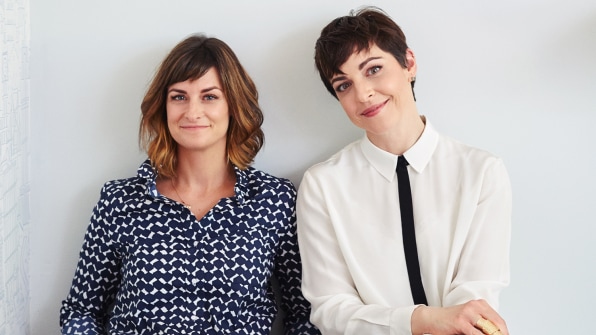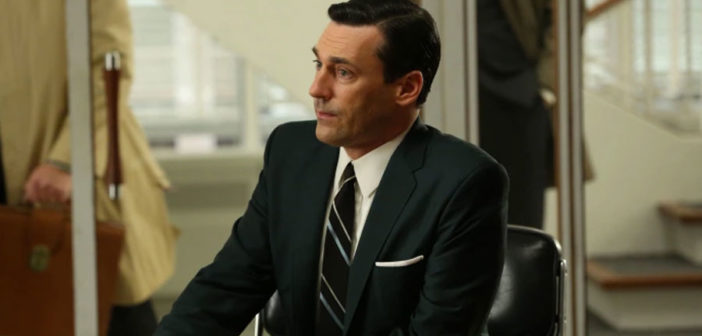To tackle their biggest jobs, the cofounders of Joan embrace roughness, naivety, and curiosity.
In the advertising world, creatives are known for going into their caves for weeks or even months to dream up big eureka-style presentations, winner-take-all pitches that are as much about showmanship as they are about satisfying a client’s needs. But these magical moments, epitomized on TV shows like Mad Men, have led the industry astray, says Jaime Robinson, chief creative officer at Joan, the Manhattan-based digital ad agency. She advises her peers to avoid “the Don Draper moment.”
It’s not just the ad world that prides itself on what the company’s CEO and cofounder Lisa Clunie calls “the big reveal”: It’s the conventional wisdom everywhere from Hollywood to the tech industry. But for ad agencies, there’s a particular emphasis on a creative process where “the client gives you a problem to solve, you go away to do your research and concepting, and come back like, ‘boom, here’s your answer!’” Clunie explains at Fast Company‘s Innovation Festival in New York this week. “The truth is, more often than not, the idea isn’t quite there, there’s something [the client]didn’t tell you, or maybe you overshot by a mile. They lead to these ouchmoments because of all that hype [in the reveal].”
When Clunie and Robinson launched Joan last year–the shop is named for famous Joans in history and pop culture such as Joan of Arc, Joan Jett, and Joan Didion–they wanted to kill that old-style approach. In working with clients such as Coca-Cola and General Mills, they often invite them into the brainstorming process much earlier than is industry standard, usually when they have just 8 to 12 rough concepts ready. These tend to be concepts, Robinson says, that have “enough flesh [for clients]to see what they could turn into” but ideas that haven’t yet “become the word of God.”

For creatives in other fields–say, product engineers, chefs, fashion designers, screenwriters, whoever–there’s upside to letting critics into the creative process early, Clunie and Robinson believe, even if one’s ideas are still unformed–and, as is sometimes the case, ugly.
At that point, “very early on, the stakes are still low, and you get so much information to help you sharpen your ideas,” Clunie says, whereas if you wait to have that ultra-dramatic Don Draper moment, “the stakes are much higher,” and can lead to creative tension and gridlock if the “big reveal” isn’t well-received.
For Joan’s cofounders, the most obvious concern, of course, is that their rough ideas won’t come across as polished as their clients have to come to expect from their Don Draper-like predecessors–or perhaps even look foolish or naive. “Feeling naive is dangerous in business environments,” Clunie says. [But looking] at things like an innocent, naively, [is]very important to accessing your creative side. [It’s] too often seen as a danger, but it’s actually the lifeblood for our agency.”
–
This article first appeared in www.fastcompany.com
Seeking to build and grow your brand using the force of consumer insight, strategic foresight, creative disruption and technology prowess? Talk to us at +9714 3867728 or mail: info@groupisd.com or visit www.groupisd.com

